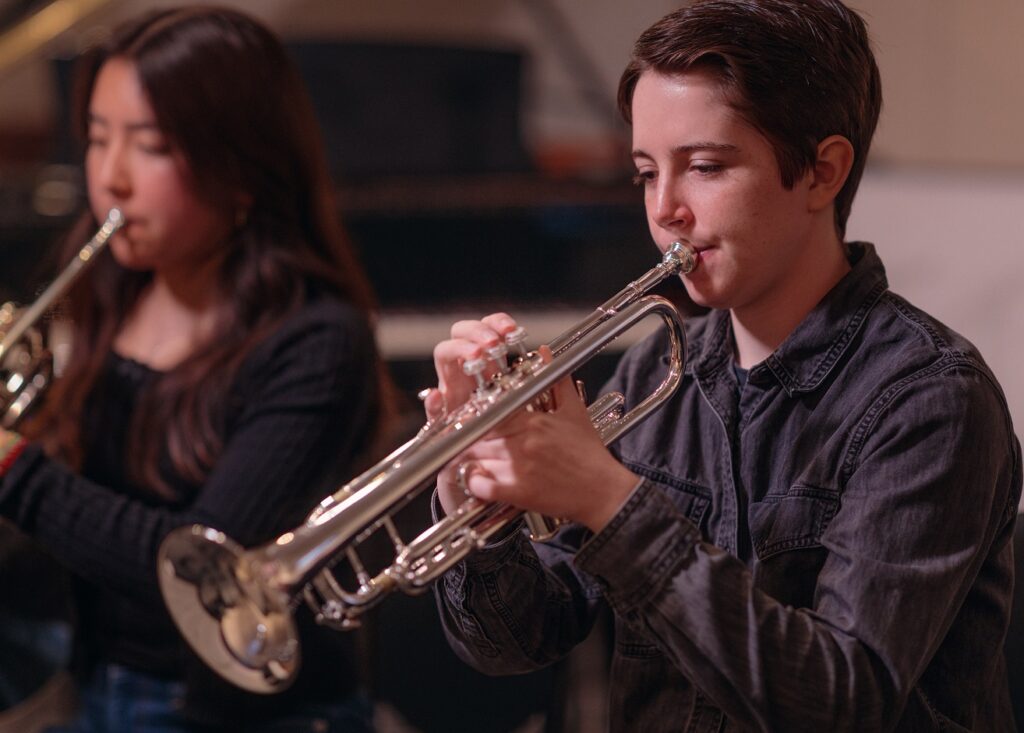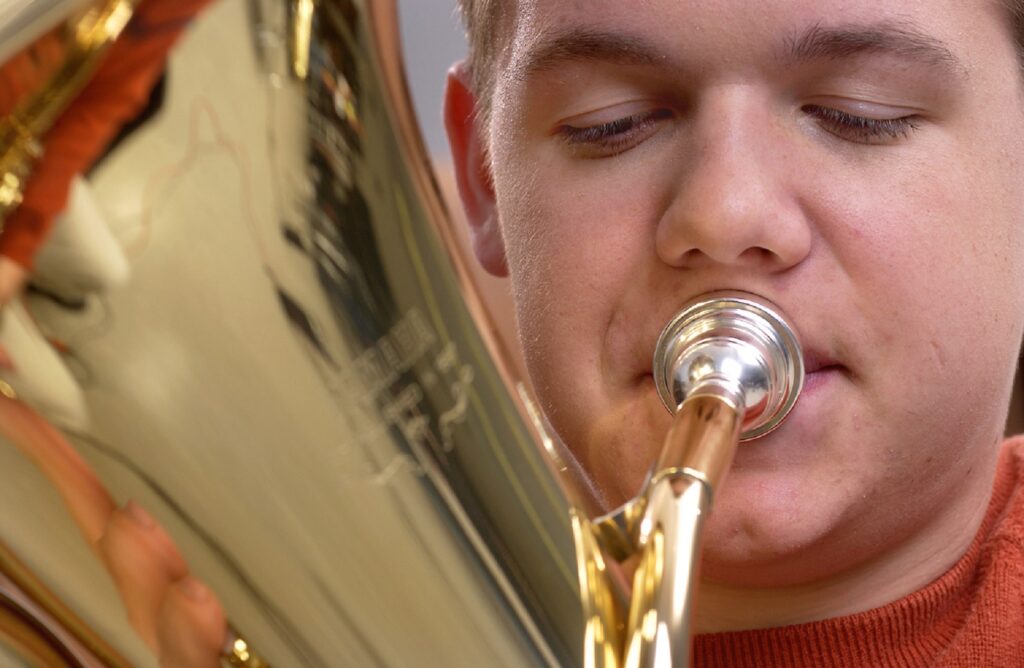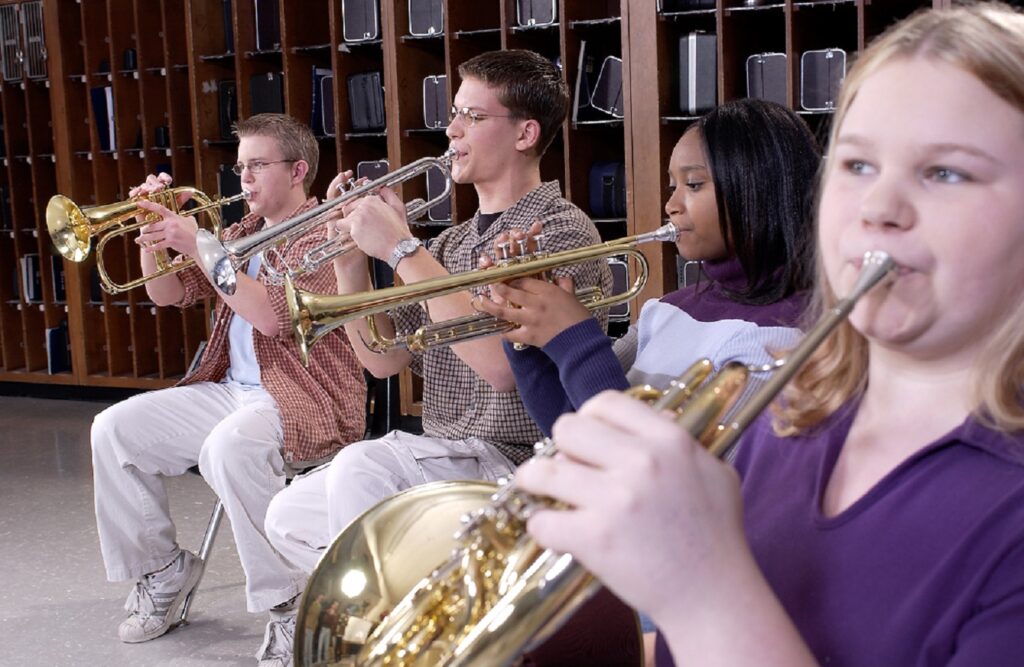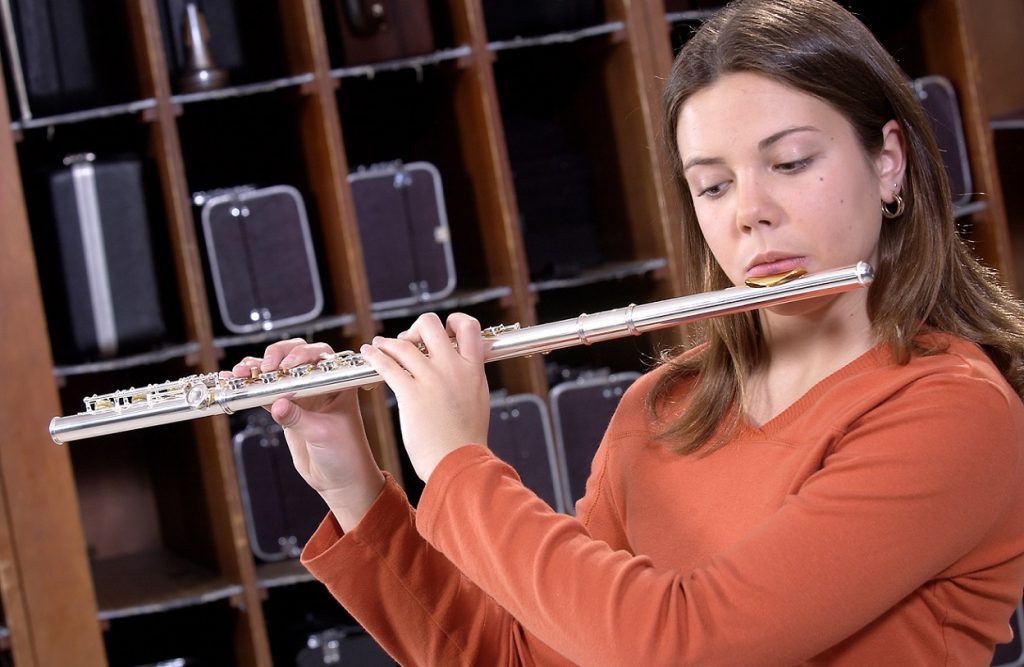Making the Switch: Flute to French Horn
Try this unconventional solution when you need to build your horn section: Choose your horn players from your pool of flutists.
Unlike woodwinds and trumpets, French horns and other medium to low brass instruments are not popular with middle school and high school band members.
The reasons so many students choose upper-range instruments seem to stay the same throughout the years. Students choose flute because their mom played it, or they want to sound like Ian Anderson of Jethro Tull in “Aqualung.” Saxophonists can’t wait to learn George Michael’s “Careless Whisper,” and the trumpet players plan to join that local ska band when they get older. Before you know it, you have a flute section of 13 and a horn section of one.
You can never have too many enthusiastic band students, but all too often, band directors end up with more flutes, saxes and trumpets than they can balance out with mids and lows. I’m here to offer an unconventional solution: Choose your horn players from your pool of flutists.
THE YAMAHA EDUCATOR NEWSLETTER: Join to receive a round-up of our latest articles and programs!
Why It Works
Flute to French horn may sound like an odd switch. I know many directors who have considered moving a trumpet player to play or double on horn. However, this decision has a disadvantage: Trumpet embouchure requires a different proportion of top to bottom lip than horn does.
It’s easy to play the French horn with a trumpet embouchure … until the high range and tone begin to suffer. These students wear out their embouchures and can’t figure out why their instrument no longer sounds right.
 Switching flutes to French horns, on the other hand, works quite well. Here’s why:
Switching flutes to French horns, on the other hand, works quite well. Here’s why:
- the pitch of flutes is easy to manipulate
- the flute embouchure is surprisingly similar to that of the French horn
- moving flutes to horns balances the pyramid both ways
The flute is a very bendy instrument. By that I mean that the pitch of the flute can change very easily. Even the slightest adjustment of corners or embouchure size can move the tuning up a note or down by a quarter tone. Because of this, flutists tend to develop a good sense of relative pitch and become very skilled at audiation, which makes them prime candidates for horn. Denis Bourikov does an excellent job of teaching purposeful note bending on flute in this video.
Flute and horn embouchures don’t look similar, but they feel similar. Both instruments require the players to blow down rather than straight across. Also, flutists and horn players use the corners of their embouchures to control their pitch.
Lastly, moving flutes to the horn section is practical. You’ll have one less high voice and one more mid-range. If you can convince two or three flutes to switch to French horn, you will end up with more balance in your ensemble.
Choosing Horn Candidates
One of the best times to find good horn candidates amongst your flutists is when you assign playing tests. Scope out the flutists who have:
- accurate pitch
- a strong upper register
- a visible condensation triangle
- small- to medium-sized lips
- a good attitude about constructive criticism and a drive to be challenged
As mentioned earlier, flutes are very bendy instruments. Choose students who have accurate pitch in both their high and low ranges, and the high range should be full and open. This means that the corners of their embouchures are already very strong, which will make the switch faster and easier.
Another way to check if a flutist has a high-quality embouchure is to look for the condensation triangle. Here’s how: Walk down the flute section and closely observe the side of the lip plate that is facing you. You will see a small area of condensation from where the student is blowing. The condensation might look spread out on the lip plate or sharply focused into a triangle. The latter is ideal. The shape of the condensation on a mouthpiece will visually tell you how focused or unfocused their sound is.
While any student can learn to play any instrument, there are certain advantages to choosing an instrument that is well-suited to your lips. For example, it’s more difficult for a person with thin lips to play the tuba and a person with very full lips to play the horn. That being said, the most important point on this list is the last one. As long as your student is optimistic and driven, they can successfully switch instruments.
Making the Big Switch
 Before you have flute students play horn in band, allow them to take a loaner home and try it out for a week or two. This will prevent them from feeling lost in the middle of a rehearsal. When the time comes, be direct with your class and mention the switch during announcements. This will keep classroom management in check and prevent any whisperings of “Why is Susan on the horn now?!”
Before you have flute students play horn in band, allow them to take a loaner home and try it out for a week or two. This will prevent them from feeling lost in the middle of a rehearsal. When the time comes, be direct with your class and mention the switch during announcements. This will keep classroom management in check and prevent any whisperings of “Why is Susan on the horn now?!”
If you are not a horn player, be sure to provide some references to local private teachers. A short horn sectional or a handful of private lessons can go a long way.
Early fall is the perfect time to invite your students to try out a new instrument. The pressure of band festivals and the winter concerts are far enough away so your students can enjoy experimenting.
Troubleshooting
While many flutists can make the switch to French horn seamlessly, this change of instrumentation is not without its drawbacks. Here are a few things to watch for:
- soft fingers
- fingering inaccuracy
- muting technique
- air pressure problems
Because your player just came from a Boehm system, they are more likely to accidentally half-valve than a student who plays trumpet. The flute requires very little pressure, but the valves on a French horn require a lot more, comparatively speaking. Also, with the French horn, the amount of time a player needs to anticipate a fingering is going to be a fair bit longer.
Because flutes are such malleable instruments when it comes to tuning, players who have switched to French horn may use their embouchure to “cheat” their horn into playing the correct note while using an incorrect fingering. While the note may sound right, wrong fingerings can cause problems down the road, especially when it comes to more advanced repertoire and playing scales.
Other things to watch for: poor right-hand muting technique and weak air pressure. Remember, muting and back pressure are two aspects that are foreign to your horn newbie.
Try It!
The struggle to perfect the pyramid of sound inside of your ensemble can seem like an endless challenge. By switching a few flutists to your horn section can make your life as a band director just a little bit easier! Why not give it a try?
















